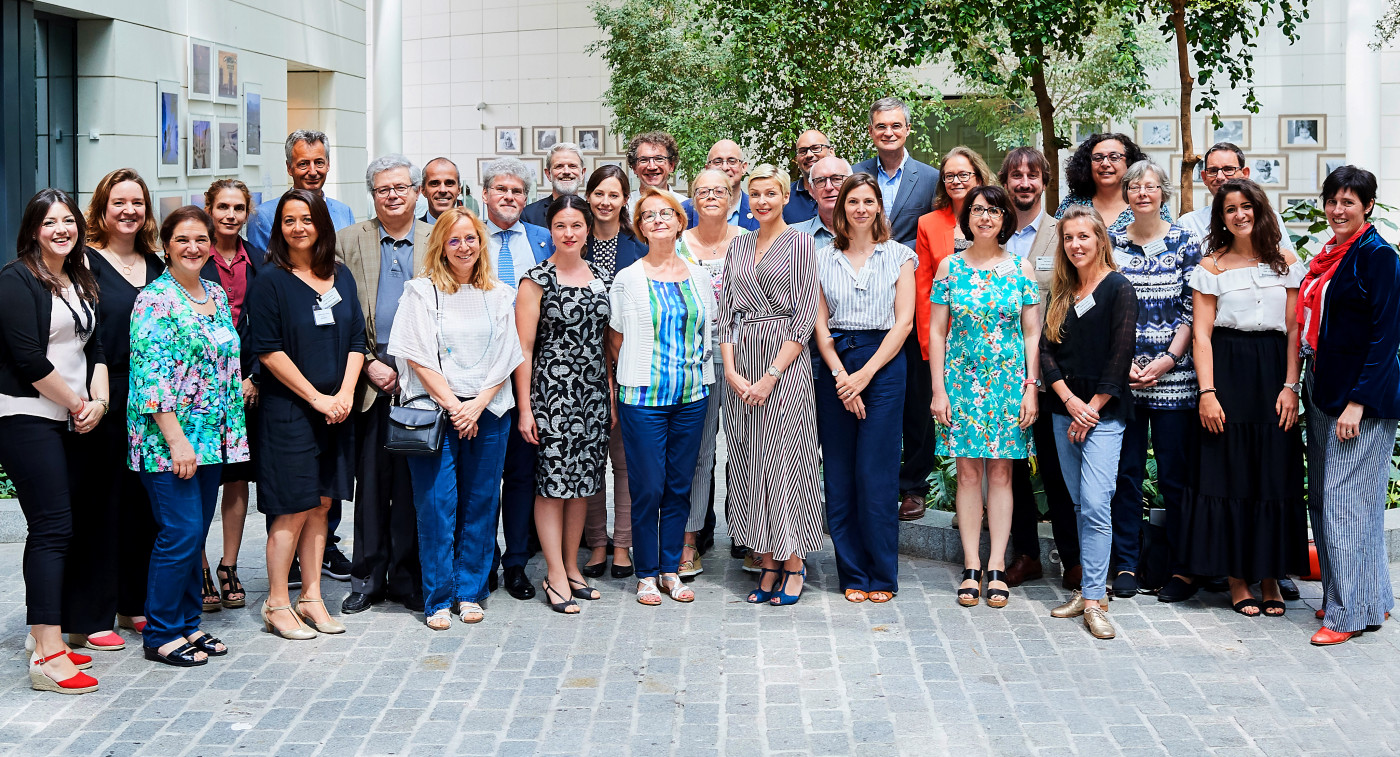European Initiative Targets Diagnosis, Treatment of Rare Diseases

The executive committee of the European Joint Programme on Rare Diseases meets recently in Brussels. (Photos courtesy of EJP RD)
A new international consortium based in Paris, and funded largely by the 28-member European Union, intends to speed the diagnosis of rare diseases, while also accelerating the development of treatments for the 95% of such illnesses that currently don’t have one.
The European Joint Programme on Rare Diseases (EJP RD), established in January 2019, operates on a five-year budget of €101 million (about $112 million), and involves at least 130 entities in 35 countries. This includes all EU member states except for Cyprus, as well as Canada and seven EU associated members: Armenia, Georgia, Israel, Norway, Serbia, Switzerland, and Turkey.
About 55% of the total budget comes from Horizon 2020 — the EU’s €80 billion ($90 billion) research and innovation program — and the remaining 45% from member countries.
“Patients with a rare disease often suffer unnecessarily and die prematurely. We need to do much more to develop effective treatments and improve diagnosis,” Carlos Moedas, the EU’s commissioner for research, science and innovation, said during a recent meeting of the International Rare Diseases Research Consortium in Brussels.
“This partnership shows how we can pool Horizon 2020 funding and resources from EU member states and beyond in order to save lives and protect people,” he said.
The new program is overseen by Inserm, the French National Institute of Health and Medical Research, and brings together hospitals, patient advocacy groups, 11 universities, and 30 funding organizations ranging from the Austrian Science Fund and Italy’s Ministry of Health, to the Swedish Research Council and the Slovak Academy of Sciences.
Patient organizations are represented in EJP RD through Paris-based Eurordis — an umbrella group composed of 862 rare disease patient groups in 70 countries — and through 24 European Reference Networks.
1,000 new therapies by 2027
Molecular biologist Daria Julkowska, PhD, coordinates the initiative. She said EJP RD was borne out of the realization that “we needed to create a real ecosystem for rare disease research in Europe” by boosting the capacity of existing research infrastructure.
“For example, today we have patient registries, biobanks and genomics data that can be very valuable, but only if you have the possibility of connecting them together and exploiting them for research,” she told BioNews Services, publisher of this website, in a phone interview from Paris.
“Our goal is that any patient with a rare disease should receive a diagnosis within a maximum of one year, or be integrated into the research pipeline,” she said. “That’s our objective, and we hope to achieve it by 2027.”
A secondary goal, she said, is to develop 1,000 new therapies for rare diseases within the next eight years, specifically targeting those illnesses that don’t have any treatments.
Julkowska completed her studies in Poland and France, and did post-doctorate work at the Pasteur Institute. Following additional training in research management, she joined E-Rare in 2010 as a program manager, then two years later took over coordination of that specialized EU program.
Among other things, she said, the EJP RD will offer grants for research projects of up to €50,000 (about $56,000) each for patient organizations.
Unlike the patient advocate groups represented by Eurordis, the EJP RD won’t lobby governments to approve reimbursement for expensive new therapies like Spinraza (nusinersen), a Biogen therapy for spinal muscular atrophy whose U.S. retail price is $750,000 the first year and $375,000 for every year thereafter.
“Since our consortium mostly focuses on research, our primary capacity is not to dictate the rules of reimbursement for drugs. This is above our level,” Julkowska said. “What we can definitely do through our actions is finance dedicated research that would demonstrate the burden of lack of treatment for patients to use as proof for discussions with policymakers.”








